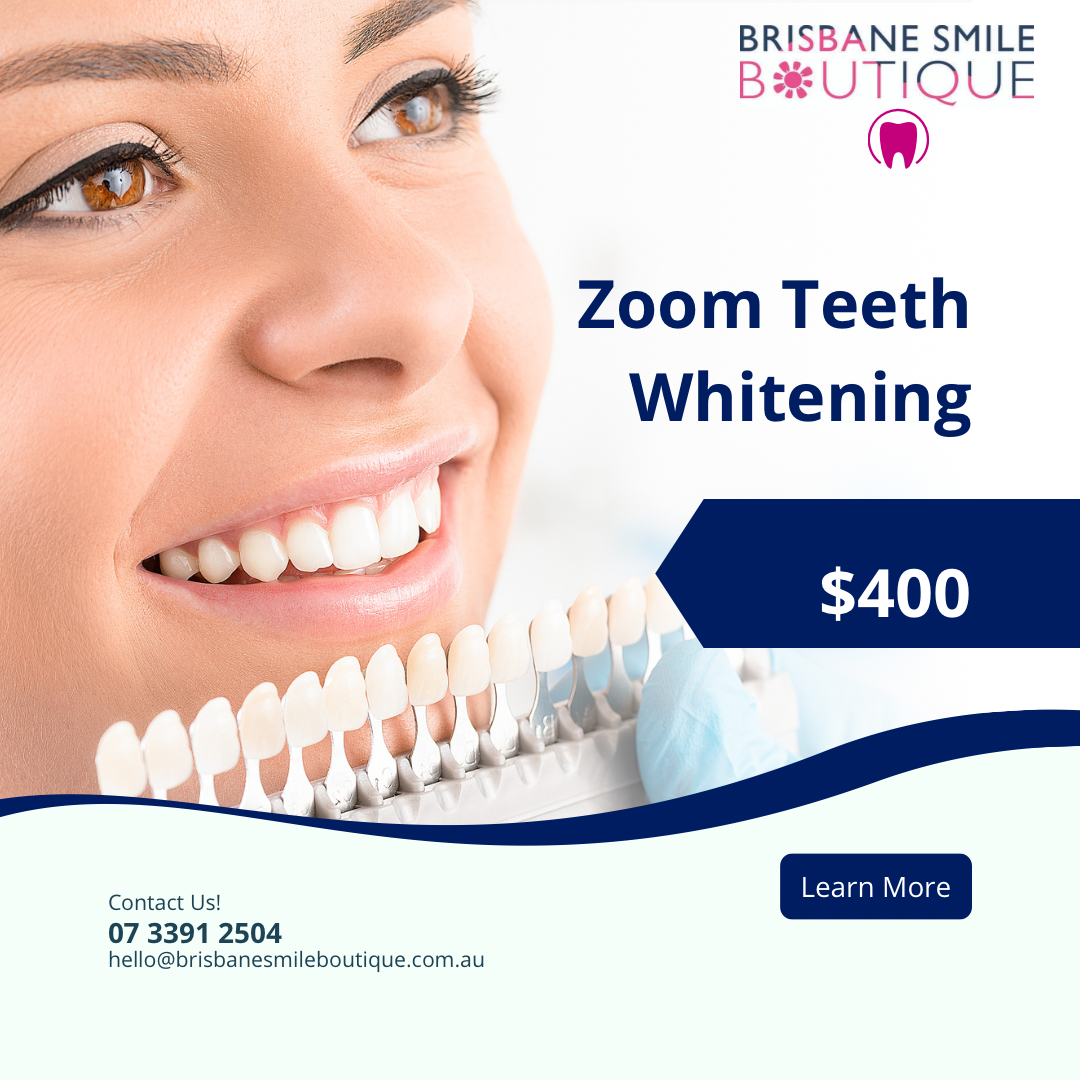How do teeth whiten exactly with Zoom teeth whitening
Zoom teeth whitening, like many other whitening treatments, primarily involves a chemical reaction between the whitening agent (usually hydrogen peroxide) and the tooth surface. The key reactions occurring at the tooth interface during the Zoom whitening process are as follows:
1. Decomposition of Hydrogen Peroxide:
- When applied to the teeth, hydrogen peroxide (H₂O₂) breaks down into water (H₂O) and free oxygen radicals (O¹). This decomposition can be accelerated by the use of a special light or laser commonly used in Zoom whitening procedures.
- The chemical reaction can be represented as: 2 H₂O₂ → 2 H₂O + O₂
2. Oxidation Reaction:
- The free oxygen radicals released from the breakdown of hydrogen peroxide are highly reactive. These oxygen radicals interact with the long-chain stain molecules that are trapped in the microstructures of the dental enamel and dentin.
- The oxidation reaction breaks the double bonds within the organic stain molecules, effectively "bleaching" them. This process changes the structure of the discolored molecules, making them colorless or less colored, and thus whitening the appearance of the teeth.
3. Penetration into Tooth Enamel and Dentin:
- The whitening agent penetrates the porous enamel and reaches the dentin layer underneath. The oxygen radicals react with both extrinsic (surface) and intrinsic (deep) stains, contributing to overall teeth whitening.
4. Light Activation:
- The Zoom whitening system often employs a special light (ultraviolet or LED) to activate and accelerate the breakdown of hydrogen peroxide, enhancing the effectiveness and speed of the whitening process.
It's important to note that while the chemical reactions involved in Zoom whitening are effective at bleaching teeth, they do not alter the intrinsic structure of the teeth. Professional supervision during the whitening process ensures the safe and appropriate application of the whitening agent, as well as the protection of gums and other oral tissues from potential irritation or damage. Additionally, individual results can vary based on factors like the initial color of the teeth, the type of staining, and the concentration of the whitening agent used.


